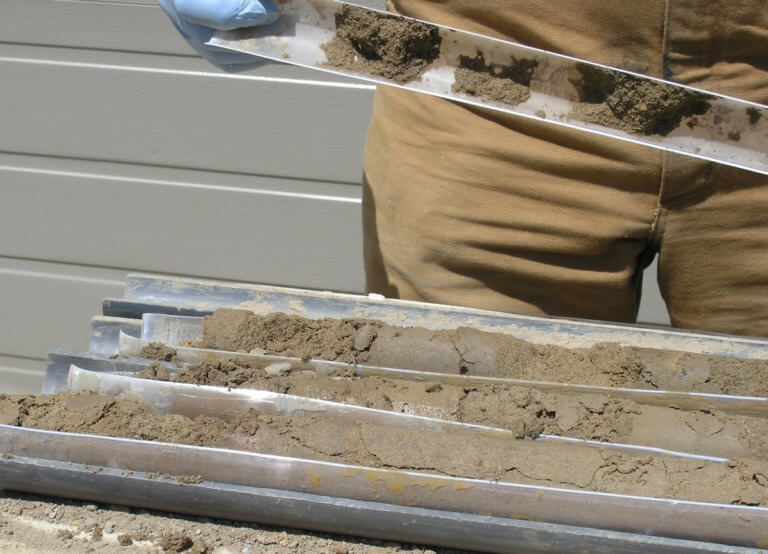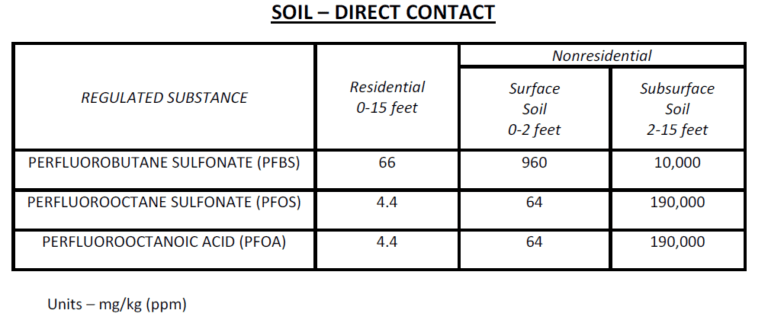
PA DEP One of First to Propose PFAS Soil Standards
On May 20, 2021, Mike Maddigan, Section Chief, Voluntary Cleanup and Standards Section of the Pennsylvania Department of Environmental Protection (PA DEP), presented to a group of environmental professionals the progress of PA DEP’s Chapter 250 final form rulemaking. The proposed rulemaking includes several new per- and polyfluoroalkyl substances (PFAS) human health standards.

These health standards are known as medium-specific concentrations (MSCs). Proposed MSC Table changes include the addition of PFAS standards for both groundwater and soil for the following PFAS compounds:
- Perfluorooctanoic Acid (PFOA)
- Perfluorooctane Sulfonate (PFOS)
- Perfluorobutane Sulfonate (PFBS)
The proposed PA DEP groundwater standards are equivalent to the current US EPA screening value of 70 parts per trillion (ppt). PA DEP groundwater standards are segregated by whether the aquifer is used by a water supplier. Used aquifers are further segregated by the total dissolved solids (TDS) measured in the groundwater. The higher the TDS, the higher the PFAS standard. As presented on the table below, PA DEP treats nonuse groundwater aquifers the same as used aquifers with a TDS ≤ 2500 milligram per liter.

PFBS values are proposed.
PFOS and PFOA values are current.
G: Ingestion
H: EPA Lifetime Health Advisory Level
R: Residential
NR: Nonresidential
Very few states have taken the step of developing soil PFAS standards, and the world is watching how this no longer emerging, but emerged, contaminant will be managed. Only PFBS is currently listed on US EPA’s regional soil and air screening tables ).
The proposed PA DEP soil standards for PFOA, PFOS, and PFBS are segregated by whether the individual exposed to the soil is a resident or non-resident (i.e., worker, visitor, trespasser). Nonresidential soil standards are further segregated by the depth below ground surface (bgs). The deeper the soil, the higher the PFAS standard. As presented on the table below, PA DEP treats PFAS soil exposure below 2 feet bgs very differently than those above 2 feet bgs, believing most human exposure occurs in the shallower soil depths.

Lastly, the PA DEP has proposed soil-to‑groundwater standards, sometimes referred to as migration to groundwater standards, or leaching standards. The soil‑to‑groundwater standards, in mg/Kg, are simply 10 times the mg/L groundwater standards, as presented on the table below.

Groundwater Used Aquifer Residential Values
- Proposed: 690 µg/L
- Final: 10 µg/L
- Proposed: 4,400 mg/kg
- Final: 66 mg/kg
- Proposed: 69 mg/kg
- Final: 1 mg/kg

